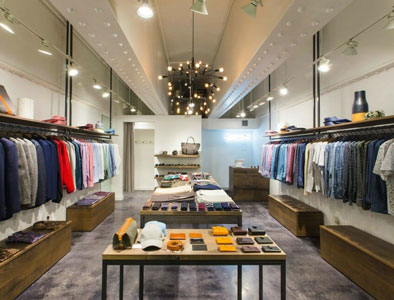Store Renovation: Methods to Blend Contemporary and Traditional
In the current retail environment that is highly competitive, standing out requires more than just a unique product offering. https://refurbishmentsuk.co.uk/best-retail-refurbishment/ has emerged as a vital strategy for businesses looking to refresh their image. Boosting the shopping experience and finally elevating revenue. This procedure entails overhauling the design of your store, layout, and general atmosphere to merge contemporary trends with timeless aspects, creating a venue that connects with both new patrons and longstanding clients. Grasping what retail refurbishment involves and its importance for your company can lay the groundwork for a fruitful transition.
With the evolution of consumer preferences and the change in shopping behaviors, retail spaces must also adapt. An intelligent renovation can rejuvenate your brand, increasing its allure and engagement for consumers. From selecting the ideal color palette and illumination to integrating sustainable strategies, numerous chances to design a fashionable space that illustrates your brand's character. In this article, we will explore the key benefits of retail refurbishment, the signs indicating your store needs an update, and practical strategies to make certain your refurbishment achieves significant success.

The Importance of Store Renovation
Retail refurbishment is essential for preserving a competitive edge in a fast-evolving market. As customer tastes change, stores must adjust to satisfy the changing needs of their clientele. A well-executed refurbishment not only refreshes the appearance of a store but also aligns the brand’s image with contemporary trends. This renewal can result in higher foot traffic, improved loyalty, and eventually, a boost in sales.
Furthermore, refurbishment plays a critical role in enhancing the overall shopping experience. An outdated store can create a poor perception and deter potential customers. By investing in contemporary decor, proper lighting, and efficient designs, retailers can create an inviting atmosphere that invites shoppers to browse and interact with the products. This fresh environment can make a significant difference in how customers perceive the brand, increasing their chances of making a purchase.
Lastly, retail refurbishment is a tactical investment that can yield long-term advantages. By well-thought-out updates, businesses can improve operational efficiency, optimizing available space and resources. Eco-friendliness has also become a important consideration in refurbishment efforts, with eco-friendly designs appealing to increasingly conscious consumers. In summary, regular refurbishment is essential for any retailer looking to succeed in a competitive landscape by improving brand image, customer satisfaction, and overall operational performance.
Organizing Your Retail Refurbishment
Successful planning is essential for a productive retail refurbishment. Start by reviewing your current space; determine areas that demand improvement and how those changes can boost the customer experience. Connect with your staff and loyal customers to collect feedback on what they perceive needs enhancement. Grasping the flow of foot traffic and the layout can offer insights into how to optimize your space for better engagement and sales.
Subsequently, set clear objectives for your refurbishment. Are you looking to modernize your design, improve functionality, or both? Set a budget that fits the scope of your project, considering potential unexpected costs that may arise. Focus on elements such as aesthetic, materials, and technology that will echo your brand values and connect with your target audience.
In conclusion, formulate a timeline for the refurbishment process, outlining key milestones from initial planning to project completion. Careful scheduling helps limit disruptions to your operations and ensures an efficient workflow. Share plans and timelines with your team to promote collaboration and maintain morale throughout the project. Keeping customers aware of the refurbishment schedule can also help address their expectations and provide assurance of your commitment to improving their shopping experience.
Elevating Client Experience Via Design
Design plays a crucial role in forming the customer experience in a retail environment. A carefully planned layout not only facilitates easy movement and creates an appealing atmosphere which encourages shoppers to browse. By employing tactical zoning, stores can guide foot traffic effectively while ensuring that merchandise is displayed in a attractive manner. An interactive environment fosters connection and involvement, causing customers feel more at ease and likely to linger longer in the shop.
Including elements like color palettes, textures, and lighting can additionally enhance the total shopping experience. Colors affect feeling and perception, with warmer-toned tones often causing a space feel more inviting, while vivid hues can revitalize. Intentional lighting design not just highlights products and enhances visual comfort, facilitating customers to value the finer details of the merchandise. Collectively, these design choices form a unified narrative that captivates customers from the moment they walk in.
In the end, the goal of styling in retail refurbishment is to match the physical space with the brand’s image. By reflecting core principles, storytelling through design elements, and creating eye-catching displays, merchants can create a stronger emotional connection with their audience. This harmony not only bolsters brand loyalty but also attracts new customers, turning the refurbished space a catalyst for increased sales and a vibrant shopping environment.